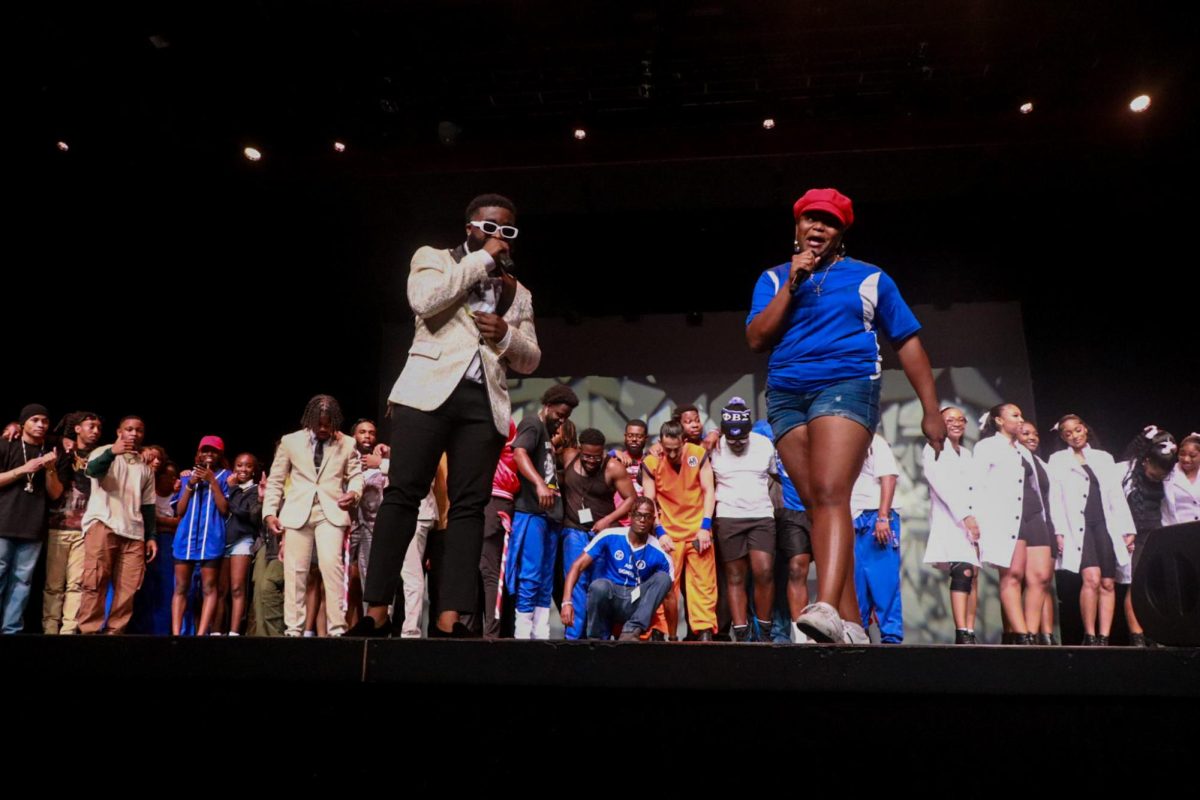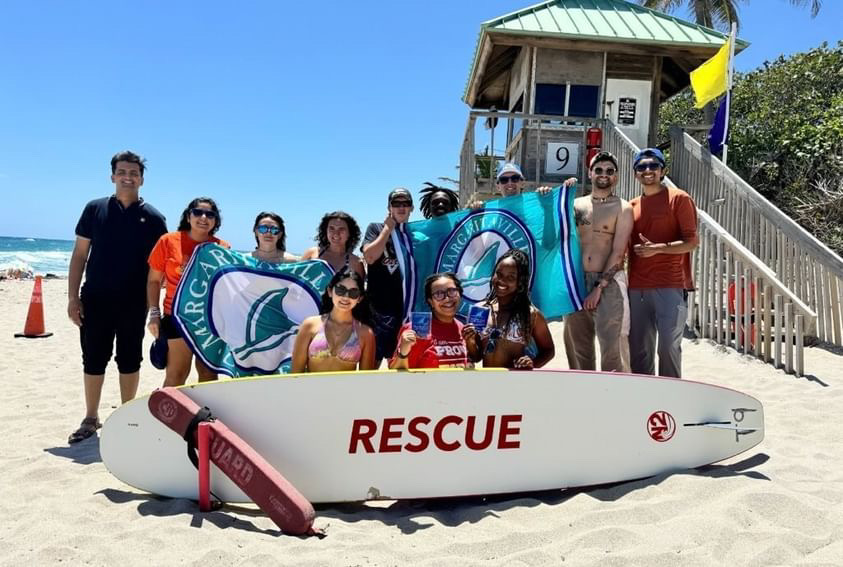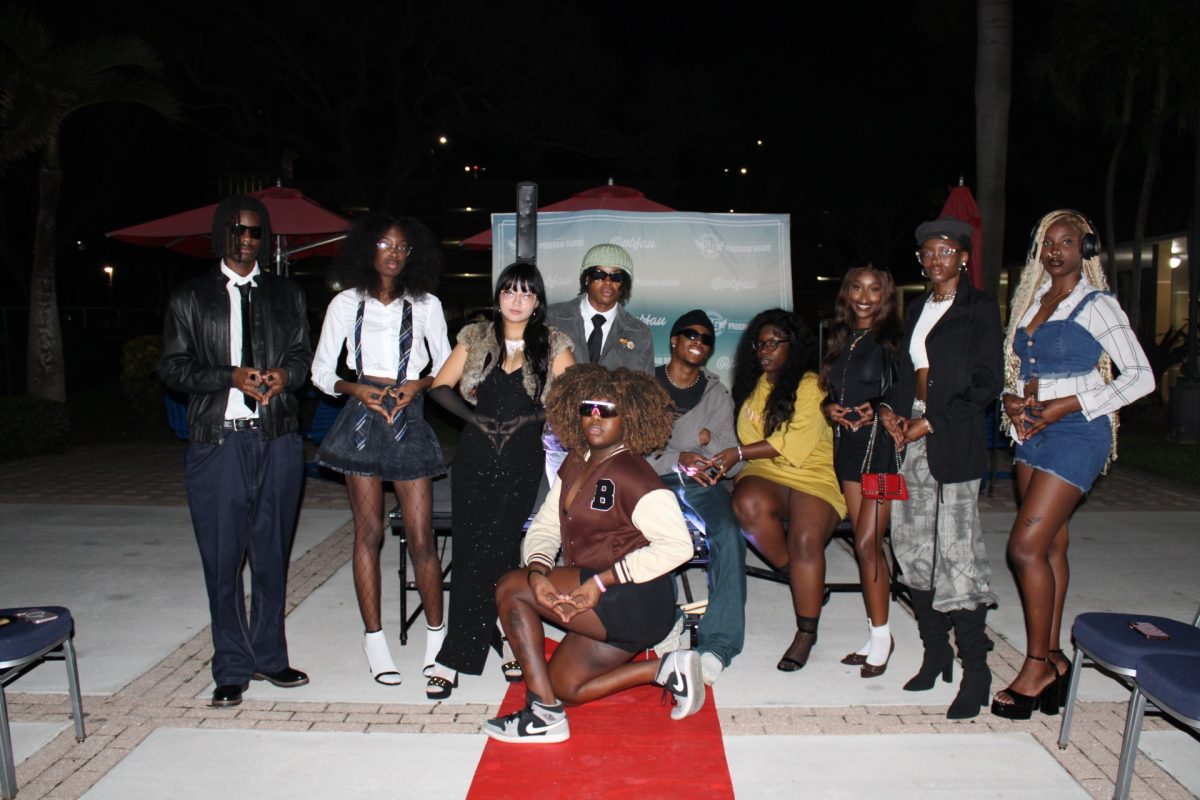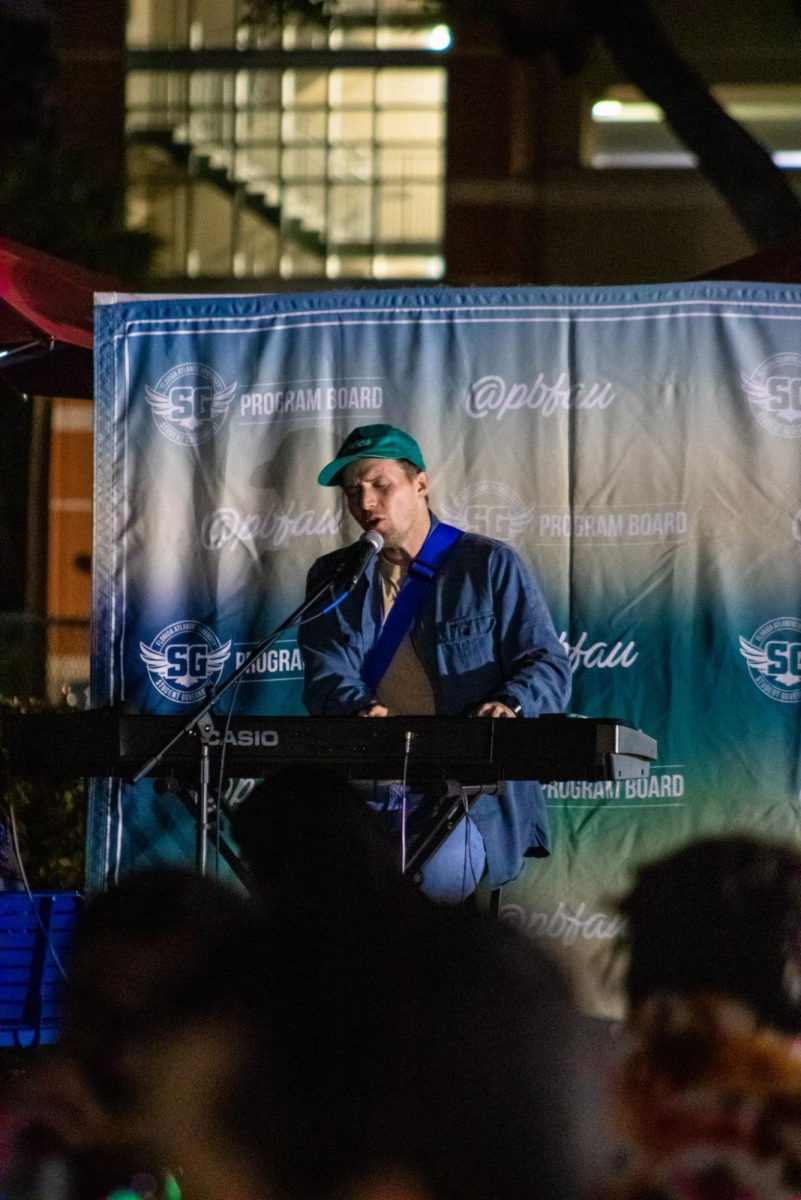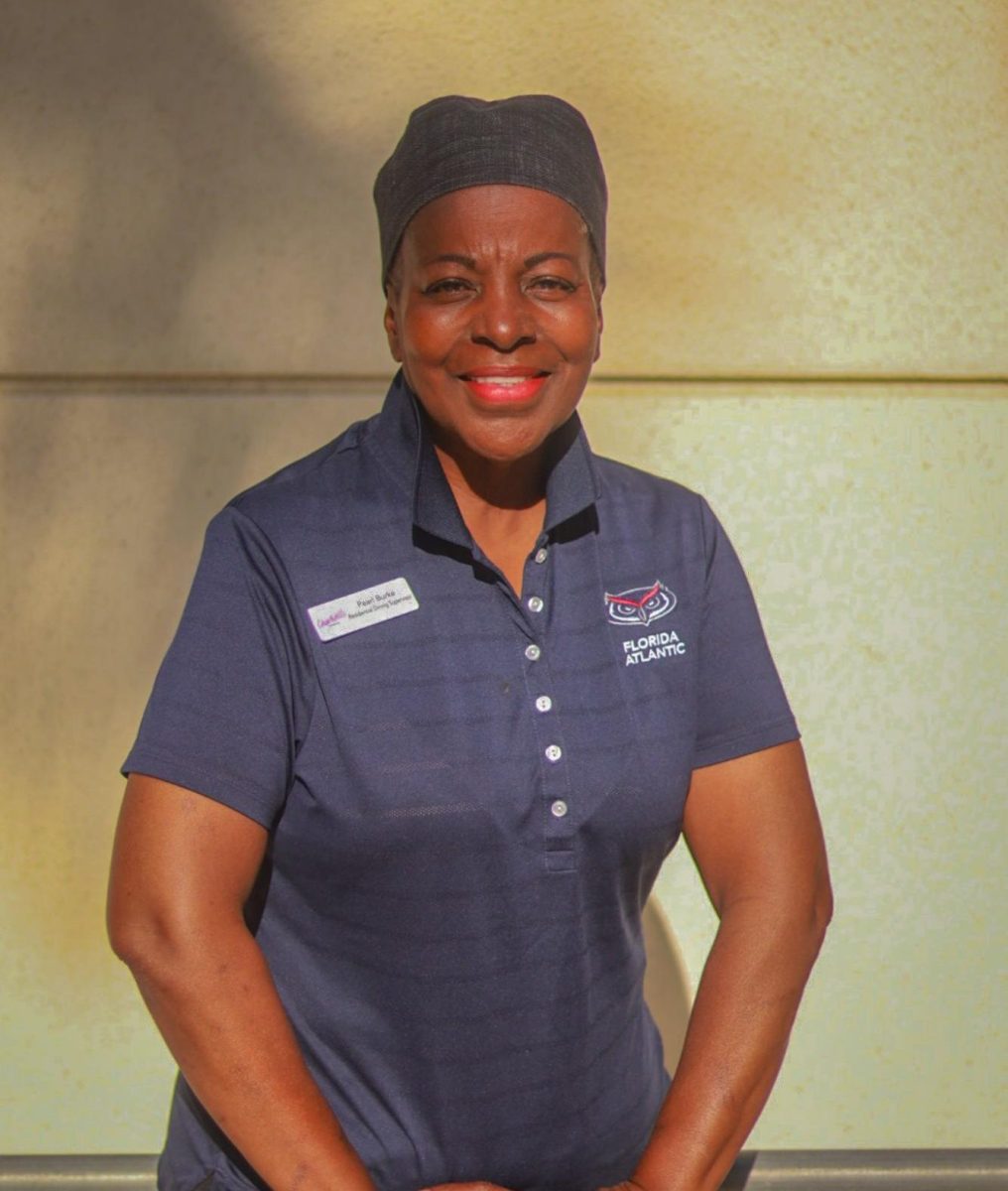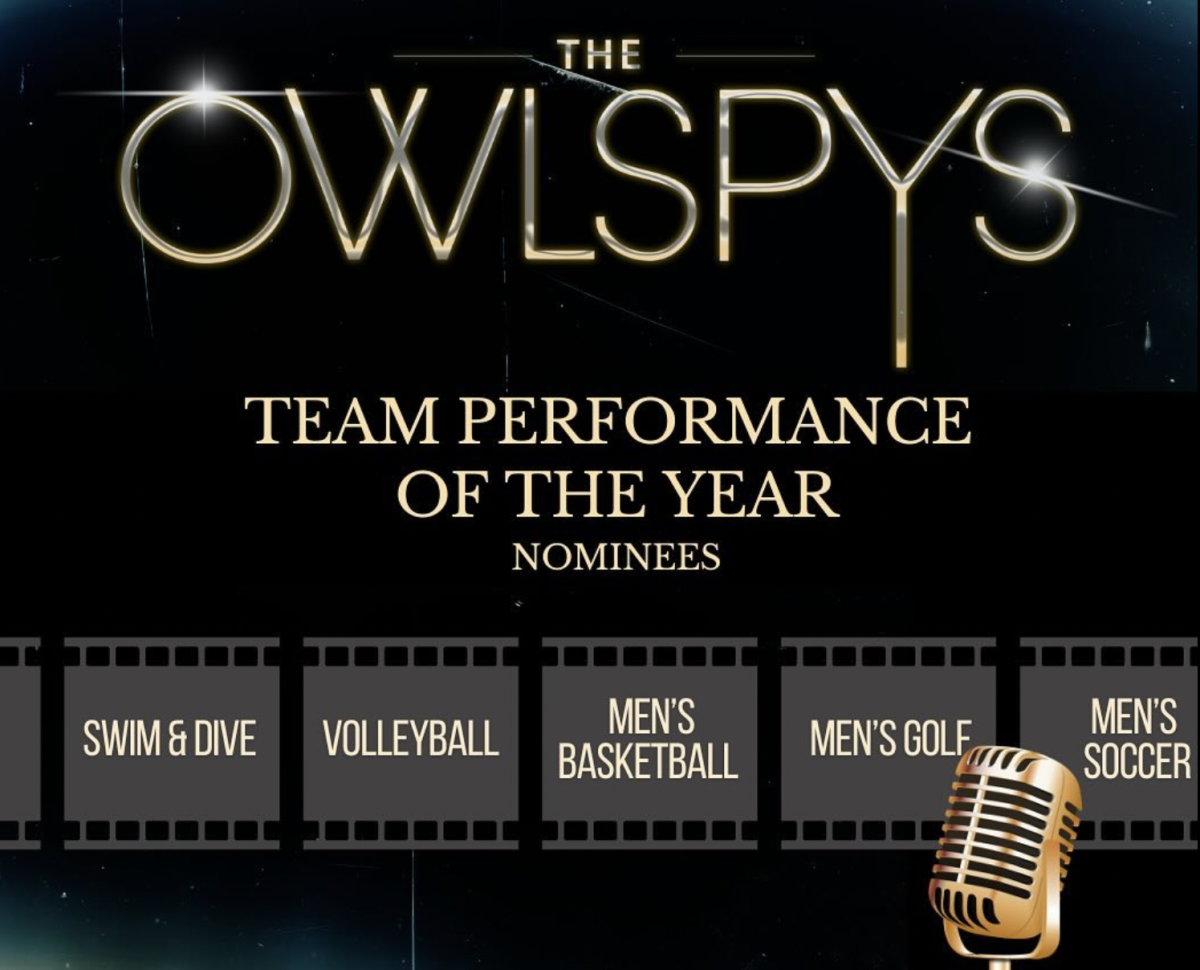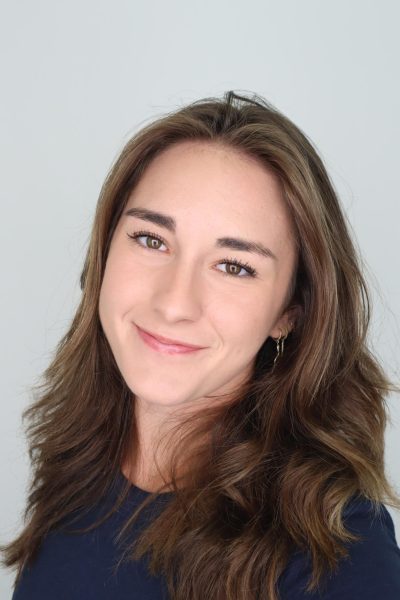Florida Atlantic University’s (FAU) Astronomical Observatory invited the community to an on-campus solar eclipse viewing event on April 8. Attendees experienced the phenomenon through telescopes and specialized glasses, marking the final solar eclipse visible from the U.S. until August 2044.
The eclipse, nicknamed “The Great North American Eclipse”, traversed North America Monday, spanning over Mexico, the U.S. and Canada. In Boca Raton, the partial eclipse began at 1:48 p.m., reached its maximum at 3:02 p.m. — blocking about 57% of the sun from view — and ended at 4:14 p.m, according to the Time And Date website.
FAU’s event lasted from 1:30 p.m. to 4:30 p.m. and took place at the East Lawn next to the Charles E. Schmidt College of Science building.
A solar eclipse occurs when the Moon passes between the Earth and the Sun, casting a shadow on Earth’s surface and obscuring the Sun’s image.
This particular eclipse holds historical significance, being the first solar eclipse visible in Canadian provinces since Feb. 26, 1979, in Mexico since July 1991, and in the U.S. since Aug. 21, 2017.
At the event, staff and volunteers arranged informative displays on the lawn, showcasing models illustrating eclipses and a planet exhibit designed with precise proportions. They also provided two solar-filtered telescopes to observe close-up details of the Sun during the Moon’s celestial passage, along with a hydrogen-alpha filtered telescope to show solar activity.
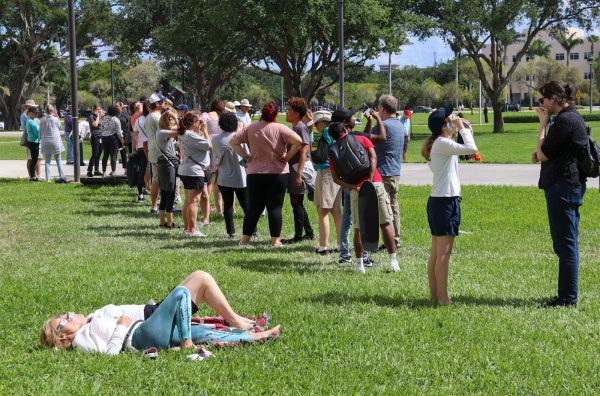
FAU astronomy and physics lab coordinator and manager of the Astronomical Observatory, Eric Vandernoot, was the main organizer of this event and helped attendees operate the telescopes.
“This is the sixth solar eclipse I’ve actually seen as partial, but all those times it was just me and my telescope,” Vandernoot said. “I wanted to share it with people. Why not celebrate something awesome like this?”
FAU’s Department of Physics provided attendees with solar eclipse viewing glasses, which are listed on the American Astronomical Society (AAS) website, to safely view the sun and the moon as they appear together in the sky.
Attendees quickly claimed all 530 eclipse glasses within the first 15 minutes, according to FAU alumnus Matt Trask, who mentors for FAU’s engineering robotics club and volunteered for the event,
“I didn’t anticipate as many people [showing up],” Vandernoot said.
Given the limited supply, some shared their eclipse glasses with those who arrived too late to obtain them. Alex Dehesa, an attendee who had originally planned to drive to Texas to witness the eclipse, was happy to give his away.
“When they ran out of lenses, I thought ‘Why don’t I give people a chance to look?’ instead of going home with the glasses in my pocket, so that’s been the best is just seeing people’s reaction,” Dehesa said.
Vandernoot remarked that the general sentiment of this event was exceptionally positive.
“Any type of nature event like this kind of takes away from the humdrum of the day,” said Jeanne Cimillo, astronomy lover and budget coordinator for FAU’s chemistry and biochemistry department, as she sat in her lawn chair and gazed at the sky.
“People take for granted that the sun is coming up, that the moon will come up and now you get the moon blocking the sun and it shows how amazing the universe really is. That stuff like that can occur and the earth can still spin,” she said.
Elizabeth Starling, an FAU physics professor with a bachelor’s degree in astrophysics, highlighted the significance of experiencing this event.
“I love seeing the public so excited about a scientific event, about an astronomical event,” Starling said, donning a blue planet print dress and matching star earrings. “I think it is one of the best things that can possibly inspire someone… It can make little kids wonder ‘Why is this happening?’ ‘How is this happening?’ ‘Why hasn’t it happened before?’ FAU’s done a pretty good job at inspiring that curiosity and helping them to learn more.”
Laurie Mermet is a staff writer for the University Press. For information regarding this or other stories, email [email protected] or DM laurie.mmt on Instagram.







